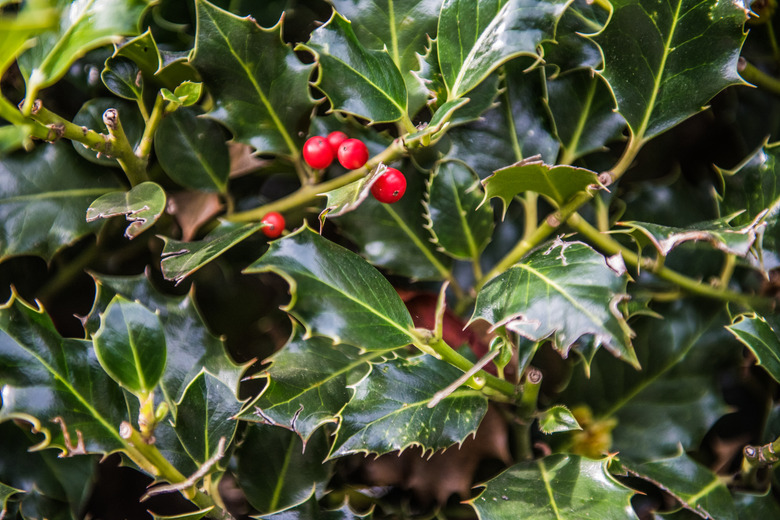How To Kill Holly Bushes
We may receive a commission on purchases made from links.
Holly bushes (Ilex spp.) are resilient plants that can get out of control and pose a threat to the rest of your garden or even your home's foundation if not properly maintained. There are a few different methods for killing holly bushes if you find your holly bush growing back despite your efforts to rid your garden of it.
Physical Root Removal
Physical Root Removal
Physically digging up the holly bush and its entire root system is the best way to remove a holly bush for good. However, if any roots remain, there's a chance the plant will grow back. Smaller holly growths can be hand plucked, but larger ones may need more physical effort.
1. Water the Ground
To make the removal and digging process easier, water the ground around the bush. Water the ground for a few days before actually removing the plant. Keeping the ground moist will help soften the soil and make digging much easier.
2. Cut Down the Bush
Before beginning to pull on the bush in an attempt to remove it from the ground, make it easier by cutting the bush down to a stump. Removing and dealing with a stump in the ground will be easier than dodging the branches and foliage of the holly bush as you work. Alternatively, if you can retain a foot or two of the main stem without sharp holly leaves, you'll get more leverage when you try to pull out the stump later. To limit regrowth, remove any berries that may have fallen during cutting.
3. Dig Around the Stump
Begin digging at about a 2-foot perimeter around the stump, working your way inward. Loosen and remove the soil.
4. Locate the Roots and Remove Dirt
Finding the roots beneath the stump is important because they need to be removed along with the stump. Dig down to expose them, at least about a foot. Follow the roots and try to extract them completely from the surrounding soil.
5. Remove the Stump and Roots
If the stump is smaller, try to physically remove the stump by pulling on it. If it is too difficult because the roots are still fairly stuck, cut the stump away from the roots with an axe or garden loppers. Don't forget to come back to the roots after removing the stump, as these need to be removed as well.
Using Chemical Methods
Using Chemical Methods
If manual extraction proves too difficult, you may need to resort to chemical herbicides. Both triclopyr and glyphosate are recommended for holly eradication. Apply the herbicide to freshly cut trunks. If you cut the trunk close to the ground, coat the outer ring of the stump's surface; otherwise, you can inject the herbicide using a special injection lance. Take care to follow the product's safety precautions and application directions according to its label.
Whether you use herbicide or not, cover the stump with an opaque tarp for several months, preferably during winter. The tarp will deprive the plant of essentials like sun and water that it needs to survive.
Methods you may have heard of but that are generally ineffective include pouring bleach on the exposed stump or driving copper stakes into the cut stump. Bleach, which might work on smaller holly bushes, is not advised, as it raises the pH level of the soil, rendering it inhospitable for plants. Driving a copper spike into the middle of the stump seems like a quick fix; however, the amount of copper actually needed to hurt and kill an aggressive bush such as holly is not possible to achieve using small copper stakes.
